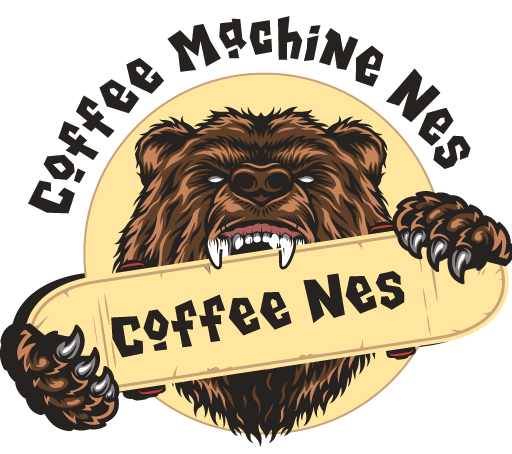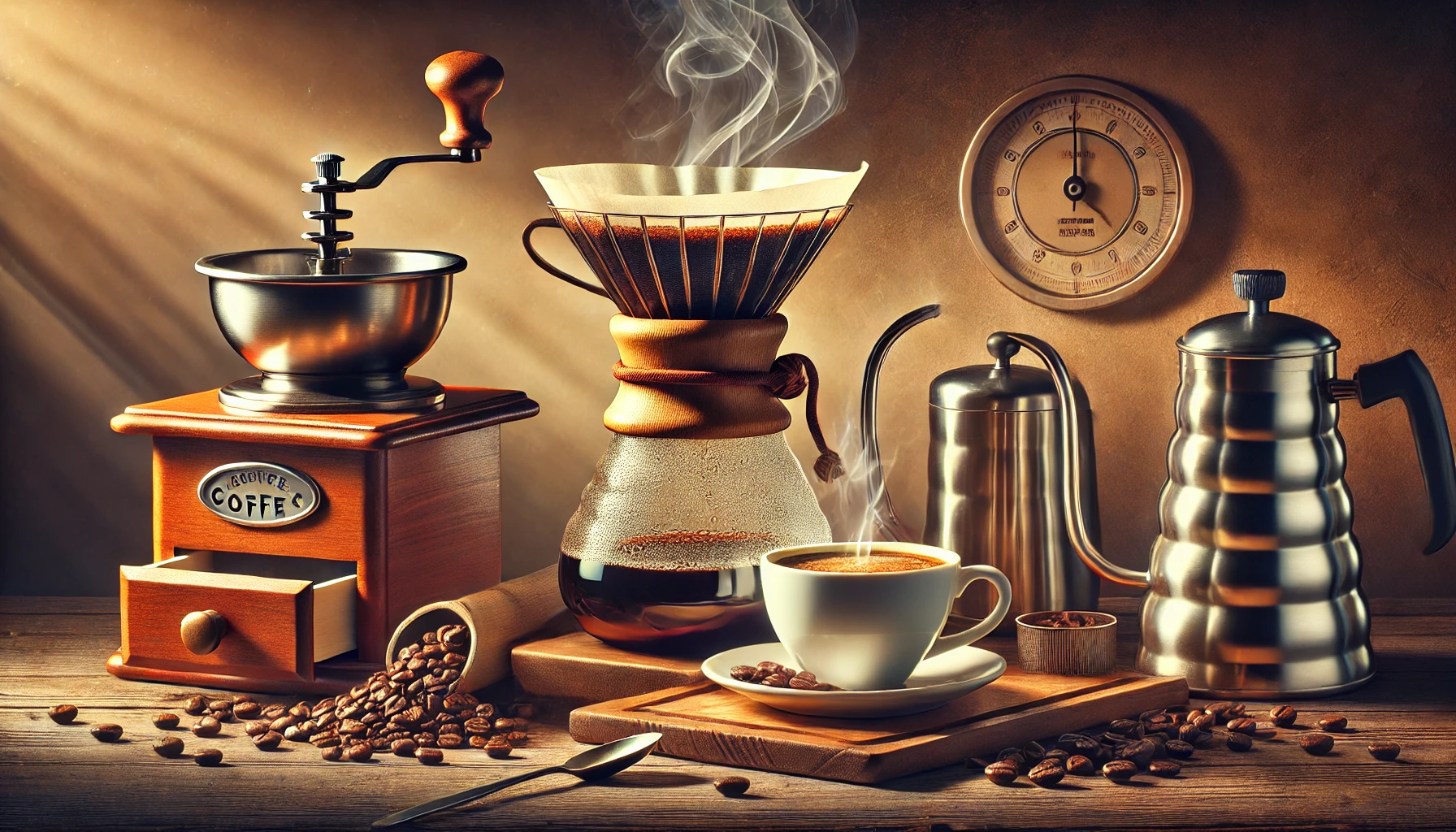Discover how to brew a perfect cup of coffee with expert tips on grind size, brewing methods, coffee-to-water ratio, and more for the ultimate flavor.
What You Need to Brew a Perfect Cup
A perfect cup of coffee isn’t just about pouring hot water over ground beans—it’s a delicate balance of quality beans, precise brewing techniques, and optimal water temperature. Coffee lovers around the world—from French Press aficionados to Espresso connoisseurs—agree on one thing: technique matters.
Before diving into brewing methods, let’s look at the fundamental components that affect coffee quality and taste.
Choosing the Right Coffee Beans
The first and most crucial step in brewing exceptional coffee is selecting high-quality beans. Beans vary widely in flavor, aroma, and acidity based on their origin, variety, and roast level.
- Arabica vs. Robusta: Which is Better?
- Arabica: Known for its smooth, complex flavors, often with fruity and floral notes. Higher acidity, lower caffeine content.
- Robusta: Stronger, more bitter taste with earthy, nutty undertones. Higher caffeine content, often used in Espresso blends.
Tip: If you enjoy a more refined and complex flavor, go for 100% Arabica beans. If you prefer a stronger caffeine kick, a Robusta blend might be a better choice.
The Importance of Coffee Freshness
Did you know that coffee loses 70% of its aroma within 15 minutes of grinding? That’s why freshness is key to achieving the best possible taste.
✅ Buy whole beans instead of pre-ground coffee.
✅ Store beans properly in an airtight container, away from heat, light, and moisture.
✅ Grind just before brewing to preserve maximum freshness.
Fact: According to the Specialty Coffee Association (SCA), coffee is best consumed within two weeks of roasting for optimal flavor.
Coffee Grind Size and How It Affects Brewing
One of the biggest mistakes coffee lovers make is using the wrong grind size. The size of the grind directly impacts extraction, which determines the final flavor profile.
| Brew Method | Grind Size | Texture |
|---|---|---|
| French Press | Coarse | Similar to sea salt |
| Pour-Over (V60, Chemex) | Medium | Like table salt |
| Drip Coffee Maker | Medium-Fine | Slightly finer than table salt |
| Espresso Machine | Fine | Like powdered sugar |
| Turkish Coffee | Extra Fine | Almost like flour |
How to Choose the Right Grind for Your Brew Method
- Too coarse? → Coffee will taste weak and under-extracted.
- Too fine? → Coffee will taste bitter due to over-extraction.
Pro Tip: Invest in a burr grinder instead of a blade grinder for consistent grind size and better flavor extraction.
The Golden Coffee-to-Water Ratio for Perfect Flavor
Finding the right coffee-to-water ratio is essential to avoid a brew that’s too weak or too overpowering.
Standard Coffee Ratios:
- Golden Ratio: 1:16 (1 gram of coffee per 16 grams of water)
- Stronger brew: 1:15 ratio
- Lighter brew: 1:17 ratio
💡 Example: If you’re making a 12-ounce (355ml) cup of coffee, you should use:
👉 22g of coffee for a balanced flavor.
👉 24g of coffee for a bolder cup.
👉 20g of coffee for a lighter taste.
Did You Know? The ideal coffee strength is measured by TDS (Total Dissolved Solids), and the Specialty Coffee Association suggests an optimal TDS level of 1.15% to 1.35%.
Best Brewing Methods to Make the Perfect Coffee
There is no one-size-fits-all when it comes to brewing coffee. Different methods bring out unique flavors, aromas, and textures.
1. Pour-Over Method (V60, Chemex)
A favorite among coffee enthusiasts because of its ability to highlight subtle flavors.
Pros:
✔️ Clean, crisp taste with minimal bitterness.
✔️ Full control over brew time and water flow.
How to Brew:
- Heat water to 195–205°F (90–96°C).
- Place a filter in the dripper and pre-wet it.
- Add medium-coarse ground coffee (about 22g per 350ml water).
- Slowly pour hot water in circular motions.
- Brew for 3-4 minutes.
Tip: Use a gooseneck kettle for more precise pouring and better extraction.
2. French Press: Rich and Bold Coffee
A classic method that delivers a full-bodied, rich brew with natural oils.
Pros:
✔️ Simple and requires no paper filter.
✔️ Strong, bold flavors with a heavier mouthfeel.
How to Brew:
- Use coarse-ground coffee.
- Add coffee to the French Press (1:15 ratio).
- Pour in hot water (195–205°F) and stir.
- Let it steep for 4 minutes.
- Slowly press down the plunger and serve.
Pro Tip: If you notice excess sediment, pour the coffee slowly to leave the sludge behind.
3. Espresso: The Base for Many Coffee Drinks
Espresso is the foundation for many popular drinks like Cappuccino, Latte, and Americano.
Pros:
✔️ Strong, concentrated coffee with a velvety crema.
✔️ Quick and efficient brewing process.
How to Brew:
- Use fine-ground coffee (similar to table salt).
- Pack the coffee tightly in the portafilter.
- Pull an espresso shot (25-30 seconds).
- Serve as is or mix with milk for a latte.
Fact: Espresso was invented in Italy in 1901 by Luigi Bezzera to create a quick, concentrated coffee shot.
The Ideal Water Temperature for Coffee Brewing
Water temperature plays a crucial role in coffee extraction. Using water that’s too hot can cause over-extraction, making the coffee bitter. Water that’s too cool leads to under-extraction, producing a flat, sour taste.
Optimal Water Temperature:
- 195°F – 205°F (90°C – 96°C) → Best range for proper extraction.
- Below 185°F (85°C) → Leads to weak, under-extracted coffee.
- Above 210°F (98°C) → Burns the coffee, creating a bitter taste.
Tip: If you don’t have a thermometer, boil water and let it sit for 30 seconds before pouring.
See more: What’s the Buzz About Cycling and Coffee?
Step-by-Step Guide: How to Brew a Perfect Cup of Coffee at Home
Brewing coffee is both an art and a science, requiring careful attention to measurements, timing, and technique. Whether you’re using a French Press, Espresso Machine, or Pour-Over, following these expert steps will ensure a rich, aromatic cup every time.
Step 1: Measuring Coffee and Water Accurately
Precision is key when it comes to achieving consistent taste. At Coffee Machine Nes, we recommend using a digital scale to measure coffee and water accurately.
Golden Ratio for Coffee Brewing:
- Mild Flavor: 1:17 (1 gram of coffee per 17 grams of water)
- Balanced Flavor: 1:16 (1 gram of coffee per 16 grams of water)
- Strong Flavor: 1:15 (1 gram of coffee per 15 grams of water)
✅ Example: For a 350ml cup of coffee, use 22 grams of coffee for a well-balanced taste.
Did You Know? The term “Cup of Joe” originated in 1914 when U.S. Navy Secretary Josephus Daniels banned alcohol on ships, making coffee the strongest drink available!
Step 2: Heating Water to the Right Temperature
Water that is too hot will burn the coffee, while water that is too cold results in weak under-extraction.
Optimal Brewing Temperatures:
- Pour-Over & French Press: 195°F – 205°F (90°C – 96°C)
- Espresso Machines: 200°F (93°C)
- Cold Brew: Room temperature water or cold water (35°F – 45°F / 2°C – 7°C)
✅ If you don’t have a thermometer, simply boil water and let it sit for 30 seconds before pouring.
Expert Insight: Coffee brewed at 200°F extracts 20-30% more flavors than coffee brewed at 180°F. This is why high-end machines like our Coffee Machine Nes Premium Series feature temperature control technology for optimal extraction.
Step 3: Choosing the Right Brewing Method
Every brewing method offers a unique coffee experience. Here’s how to match your preferences with the best method:
1. Pour-Over Coffee (V60, Chemex) – For Delicate, Balanced Flavor
✅ Ideal for those who love bright, clean flavors with complex aroma.
✅ Requires medium-fine grind and a slow, controlled pour.
✅ Total brew time: 3-4 minutes.
2. French Press – For Rich, Full-Bodied Coffee
✅ Uses coarse grind for better flavor extraction.
✅ Retains natural coffee oils, giving a fuller taste.
✅ Total brew time: 4 minutes steeping + 1 minute pressing.
3. Espresso – For Intense, Concentrated Coffee
✅ Requires fine grind and high-pressure brewing.
✅ Produces a rich crema on top.
✅ Brew time: 25-30 seconds per shot.
4. AeroPress – For Quick, Smooth Coffee
✅ Combines pressure brewing with immersion.
✅ Brew time: 2 minutes.
✅ Perfect for travelers who want an espresso-style drink.
5. Cold Brew – For a Smooth, Low-Acidity Cup
✅ Uses extra coarse grind.
✅ Brewed in cold water for 12-24 hours.
✅ Yields a naturally sweet, less acidic flavor.
Pro Tip: Looking for convenience without compromising quality? Try the Coffee Machine Nes Smart Brewer, which automates brewing while maintaining barista-level precision.
Step 4: Brewing and Adjusting for Taste
✅ Too bitter? Grind the coffee coarser or reduce brewing time.
✅ Too sour? Grind finer or increase brewing time.
✅ Too weak? Increase the coffee-to-water ratio.
Fact: The world’s most expensive coffee, Kopi Luwak, comes from beans eaten and excreted by civets. It costs over $600 per pound!
Step 5: Serving and Enjoying Your Coffee
Coffee isn’t just about the brewing process—it’s about how you enjoy it.
✅ Serve coffee in preheated cups to maintain temperature.
✅ Stir espresso before drinking to balance flavors.
✅ Experiment with milk frothing techniques for cappuccinos and lattes.
Common Mistakes to Avoid When Brewing Coffee
Even experienced coffee drinkers make mistakes that can affect flavor. Avoid these pitfalls to brew consistently great coffee.
1. Using the Wrong Coffee-to-Water Ratio
Too much coffee? Your brew will taste overpowering and bitter. Too little? It will be weak and watery.
2. Grinding Coffee Incorrectly
- Too fine for French Press? You’ll get sludge at the bottom.
- Too coarse for Espresso? It will taste sour.
3. Using Poor-Quality Water
Over 98% of coffee is water, so bad water = bad coffee. Always use filtered water for the best results.
4. Over- or Under-Extracting Coffee
✅ Over-extraction = bitter, burnt taste (caused by brewing too long).
✅ Under-extraction = weak, acidic taste (caused by brewing too short).
Did You Know? The first instant coffee was invented in 1901 by Dr. Satori Kato, a Japanese scientist.
Expert Tips for Enhancing Your Coffee Experience
Want to take your coffee to the next level? Here are insider tips from Coffee Machine Nes.
1. The Importance of Pre-Wetting Your Coffee Filter
✅ Rinsing removes paper taste from filters.
✅ Improves water flow for even extraction.
2. Storing Coffee Beans Properly for Maximum Freshness
✅ Keep beans in airtight containers.
✅ Store in a cool, dark place—not in the fridge!
3. Experimenting with Brew Times for Optimal Taste
✅ Longer brew time = stronger coffee.
✅ Shorter brew time = lighter coffee.
Fact: Coffee has over 800 aromatic compounds, more than wine!
Conclusion: Mastering the Art of Coffee Brewing
Brewing coffee is more than just pouring hot water over beans—it’s about precision, passion, and patience. By following these expert tips and methods, you can consistently brew a perfect cup of coffee at home.
I’m Jeff Olson, and I love coffee. In fact, I’m something of a professional about coffee. I own and operate coffeemachinenes.com, one of the web’s top resources for everything coffee-related. I’m also an avid home barista, and enjoy experimenting with different brewing methods and flavor profiles. When I’m not nerding out about all things coffee, you can find me playing guitar or spending time with my wife and kids.

